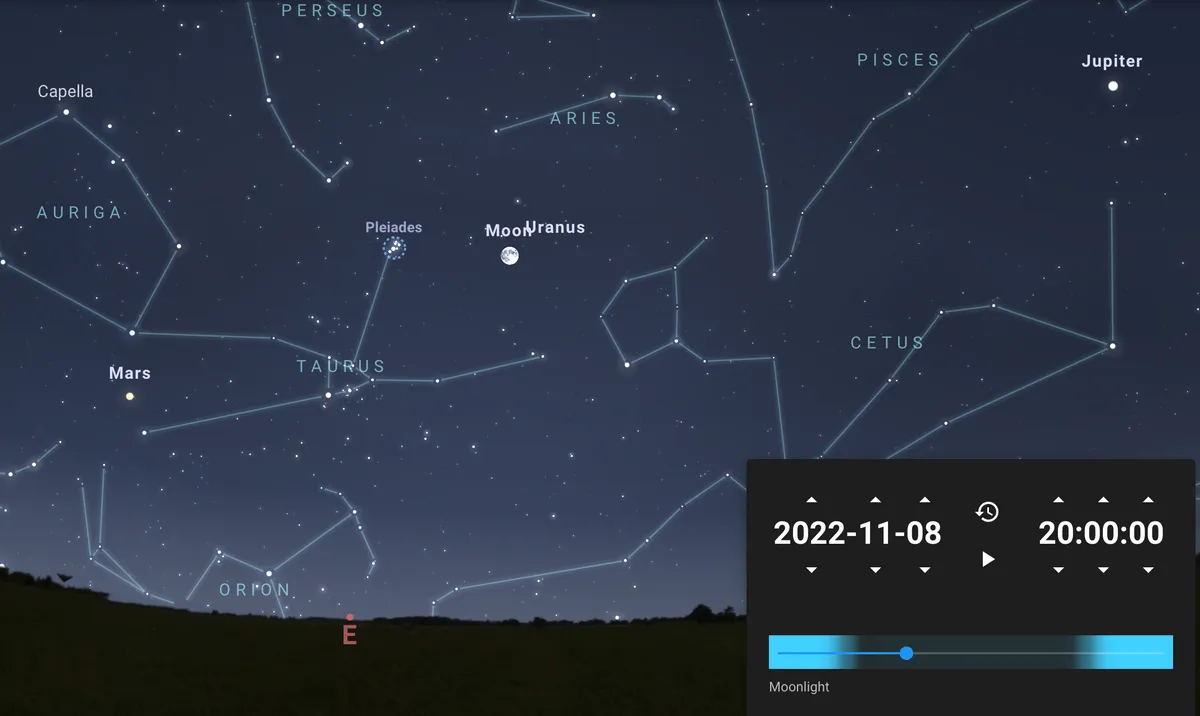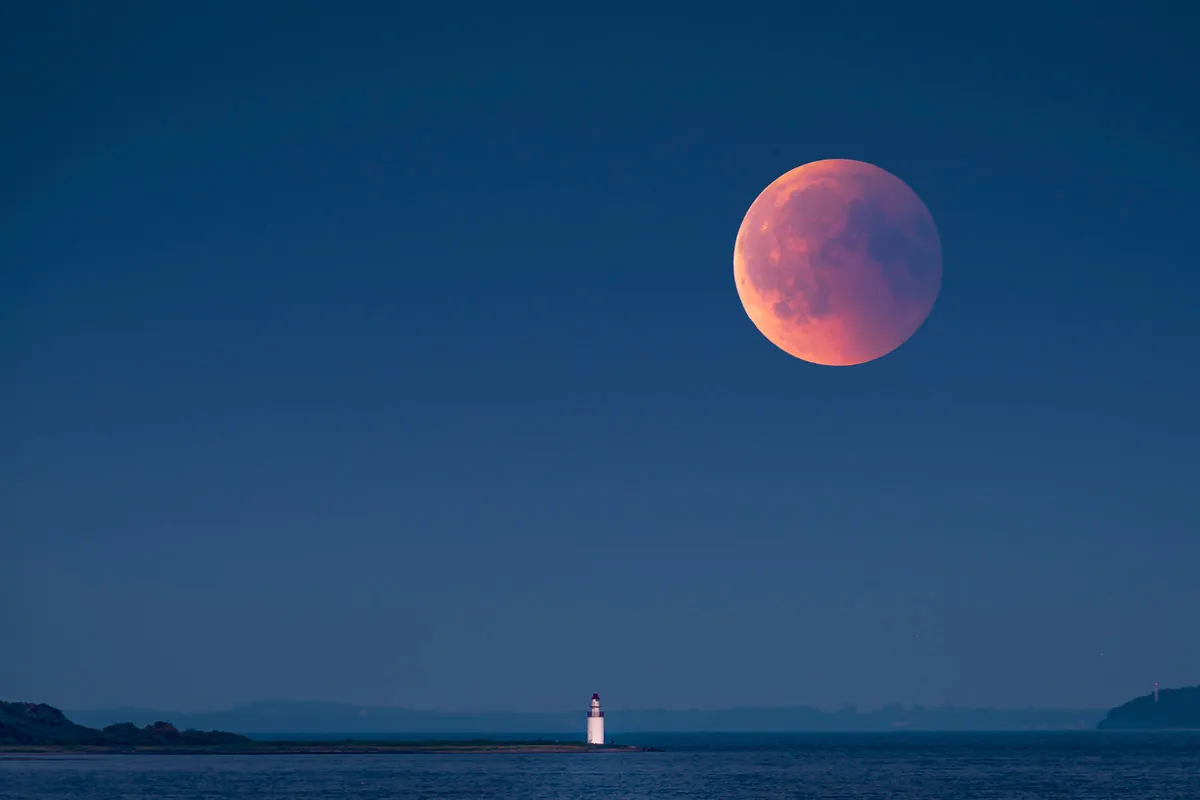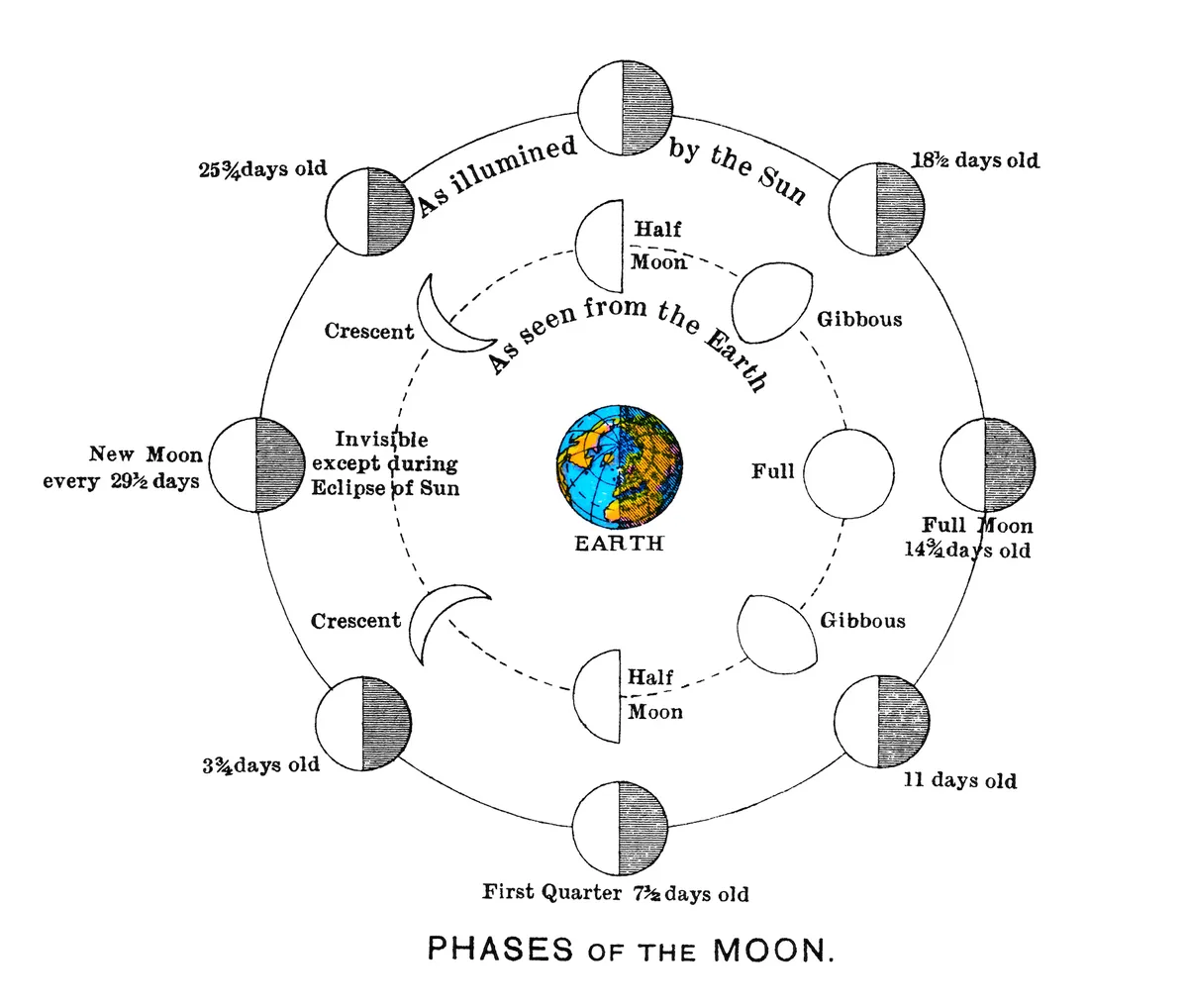For observers in the northern hemisphere, the Milky Way can be seen arching high overhead, and the winter constellations Taurus, Gemini and Orion can be seen to the southeast. Uranus reaches its yearly opposition on 9 November, and later in the month the Leonids, a meteor shower which reaches its maximum on 17-18 November, will hopefully offer decent-ish views on a last quarter Moon.
If we're afforded clear nights this season, why not make the most of them with our full Moon UK calendarandastronomy for beginners guide? And, in case you missed it, we've pulled together the best pictures of theHarvest Moon in 2022.
When can I see the Beaver Moon 2022?
The full Beaver Moon will be visible on Tuesday 8 November 2022 and can be seen in the early morning and then again in the evening in the UK and the northern hemisphere.
The Moon will rise in the east-northeast at 4:02pm on Monday 7 November and will set at 7am the next morning in the west-northwest, on 8 November 2022 as seen from London (times vary with location).
In the afternoon of 8 November, it will rise at 4:19pm, and set the following morning, 9th November at 8:18am.

Jupiter leads the way as the Moon rises in the evening of the 8 November, with Mars trailing behind. By 8pm, Mars, the Moon, and Jupiter will line up. Uranus at this time will be just 0.8 degrees south of the Moon, before reaching opposition the following day, on 9 November 2022.
If weather spoils the occasion, or you are unable to see the full Beaver Moon at its peak, it will also appear full the night before and after. In London, the forecast is currently for good visibility but with occasional light cloud cover. So there's a good chance we'll be able to see the Beaver Moon this November.
A lunar eclipse will turn the Moon red...
... but not here in the UK. If you live in North America, South America, Australia or Asia you'll be treated to the full lunar eclipse, while parts of the eclipse will be visible from northern Scandinavia and parts of eastern Europe.

When is the best time to see the Beaver Moon?
The Beaver Moon will reach peak illumination at 11:02am GMT on Tuesday 8 November. For us here in the UK, this means that peak illumination will occur when the Moon is below the horizon. Early risers will be rewarded, however, as the virtually-full Beaver Moon will linger low on the horizon in a pre-dawn sky, before slipping down just before the Sun rises at 7:06am (moonset occurs at 7am).
When the Moon is at peak illumination, it will be at a distance of around 392,995km away from Earth.
The best time to see the Beaver Moon will be around 6am on the 8th November, or in the early evening – after sunset later that same day. Sunset occurs at 4:21pm, so we should be offered a good view of a virtually-full Beaver Moon as it rises around the same time.
By around 6pm, the Moon will still be fairly low on the horizon (to the top-right of the constellation Taurus just starting to peek over the horizon), and the sky will be dark enough by this point to provide enough contrast, weather permitting. If you'd like to see Mars, Jupiter and Uranus too, the best time to see the Beaver Moon will be at 8pm on the evening of the 8 November (although this will be 9 hours since peak illumination).
Two days after full, on 10 November, the Moon will be 8 degrees north of Aldebaran, the brightest star in Taurus, and then 2.5 degrees north of Mars on 11 November. Later on the 14 November, the Moon will be in Gemini, just 1.7 degrees south of it's brightest star, Pollux.
Why is it called the Beaver Moon?

The November full Moon has come to be known as the Beaver Moon in reference to the increased activity seen in beavers at this time of year. Primarily nocturnal creatures, these large, semiaquatic rodents can be seen in the light of the full November Moon preparing their dams, building them up across lakes, rivers and streams. It's also when they begin gathering stocks of food in preparation for the long winter months, and for fur traders, it's also the last opportunity to set beaver traps for winter-ready pelts.
The Beaver Moon is also called the Frost Moon by some native American tribes, after the arrival of the first frosts at the end of autumn.
Is the Beaver Moon in 2022 a supermoon?
No, the Beaver Moon in 2022 is not a supermoon.
The Moon is (unofficially) classed as a supermoon when it's situated 360,000km (or less) away from Earth in its orbital path, and we'll often have two or three full supermoons in a row. In 2022, the Strawberry Moon(June), theBuck Moon(July) and theSturgeon Moon(August) were all supermoons.
We will not see any more supermoons in 2022. The next supermoon will be on 1 August 2023, followed by a rare blue supermoon at the end of the month on 30 August 2023.
What causes a full Moon?
A full Moon occurs when the Moon is fully illuminated by the Sun, which happens when the Earth is positioned directly between the Sun and the Moon. We usually have 12 full Moons in one calendar year, although some years we can have 13.
Technically, the Moon is only 'full' for an instant (called syzygy), but it will appear full for the whole night. To our human eyes, it will also appear full during both nights on either side of being full.
At full, the Moon is precisely 180° opposite the Sun in ecliptic longitude.
The full Moon is one part of the lunar cycle, which takes 29 days, 12 hours, 44 minutes, and 3 seconds (generally rounded to 29.53 days) to complete. That means we get a full Moon every 29.53 days, calculated by the time it takes the Moon to orbit the Earth once, as measured from new Moon to new Moon. (This is also known as one synodic month.)

However, because one lunar cycle takes less than one calendar month in our Gregorian calendar, we sometimes have 13 full Moons in a year. This occurs around every two to three years. This means that we will see two full Moons in a single month, and this extra full Moon is known as a ‘Blue Moon'. The next Blue Moon will occur on 30 August 2023.
Similarly, we sometimes get two new Moons in a month. This extra new Moon is known as a Black Moon. The last Black Moon was 30 April 2022, and the next one will be next year, 19 May 2023.
Read more about the Moon: